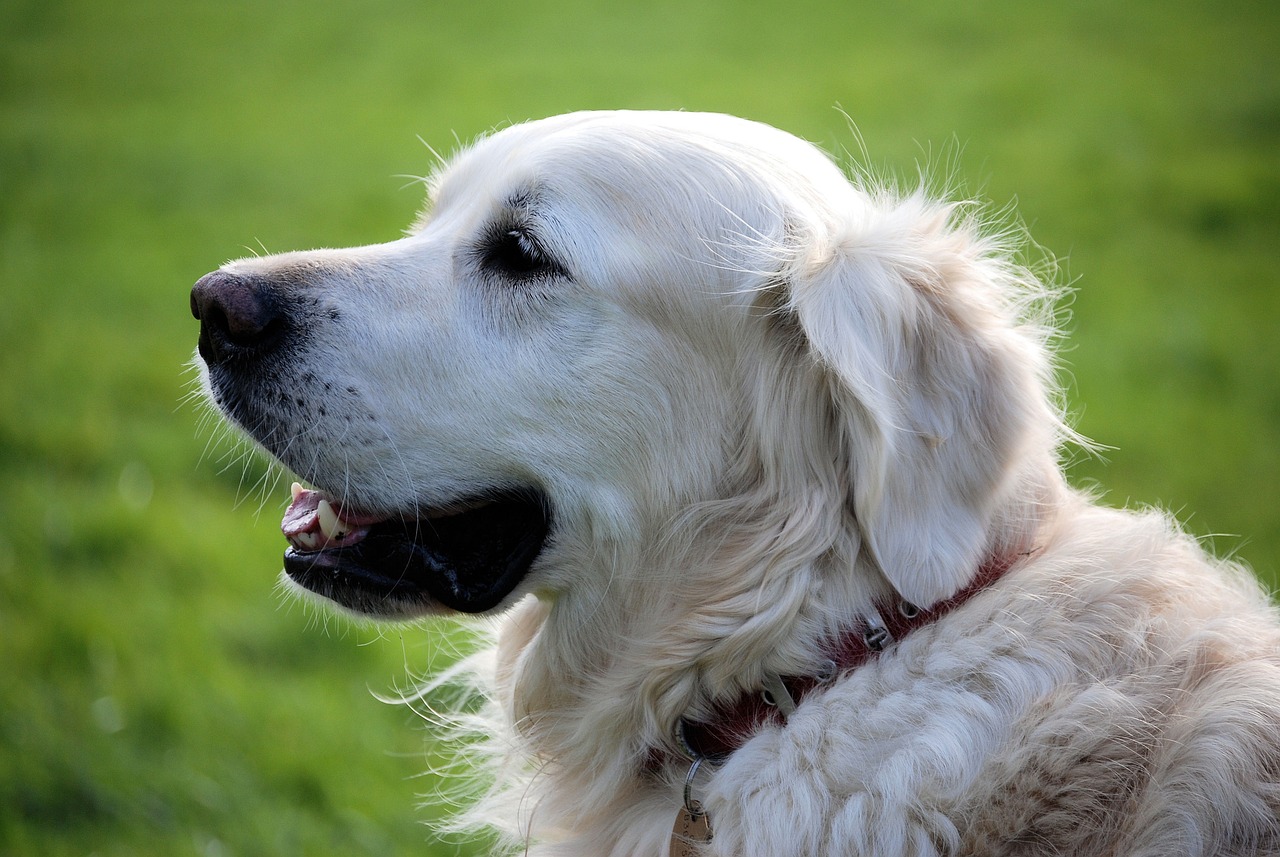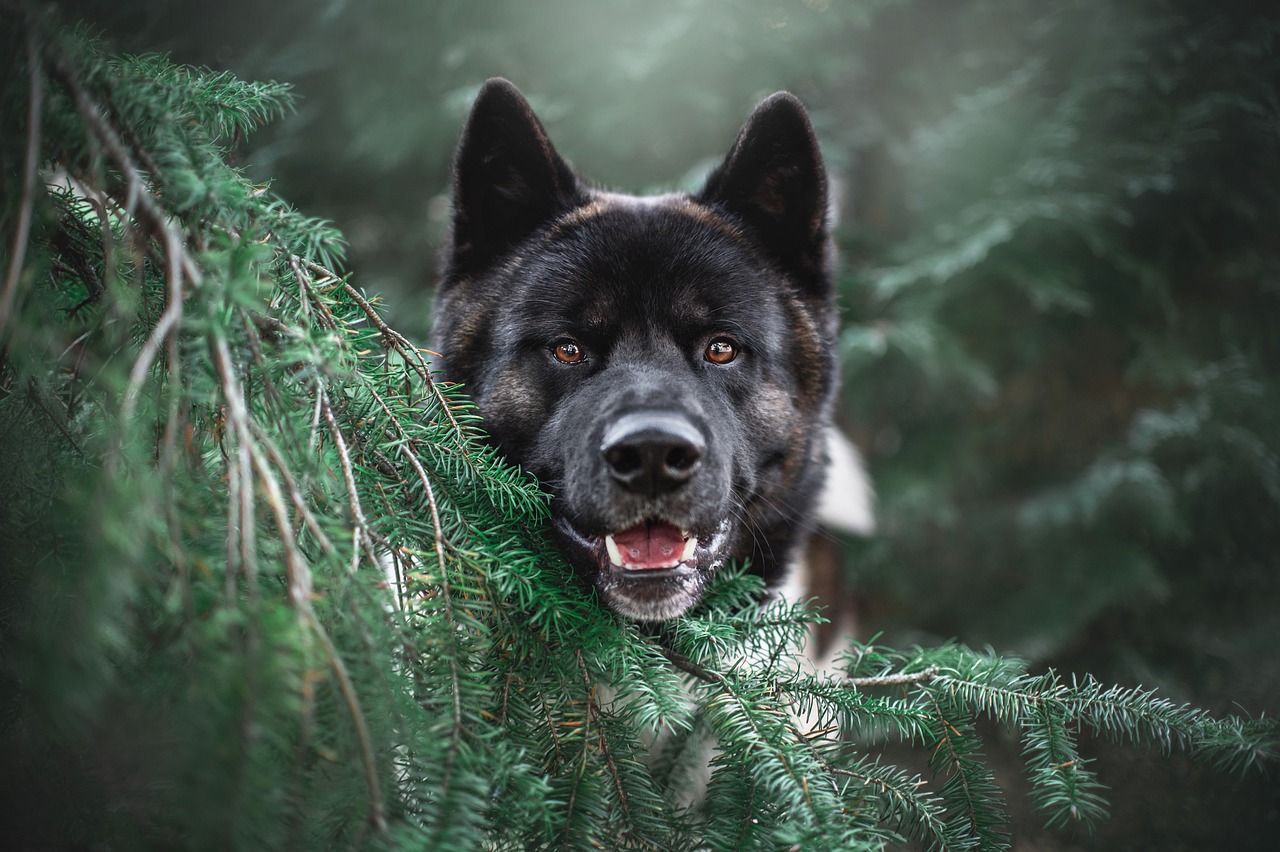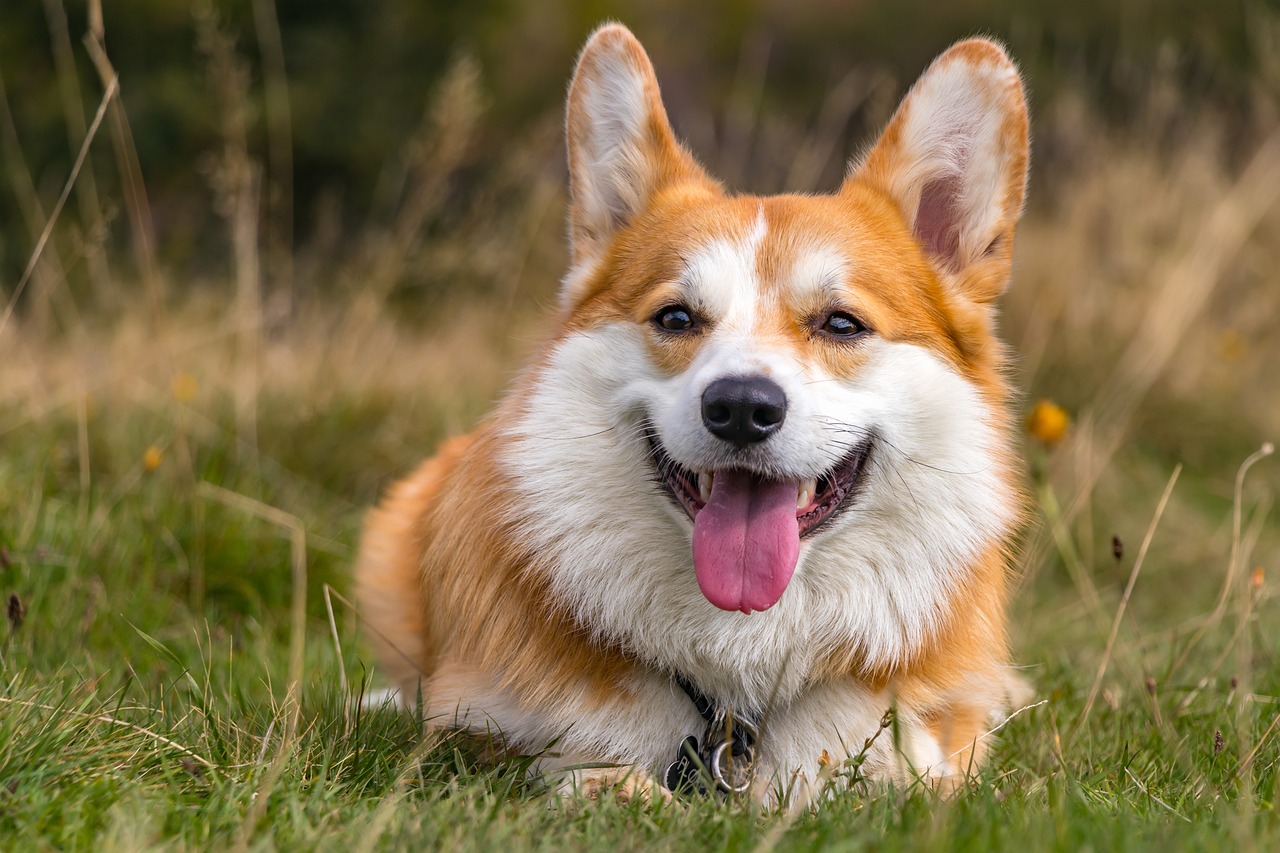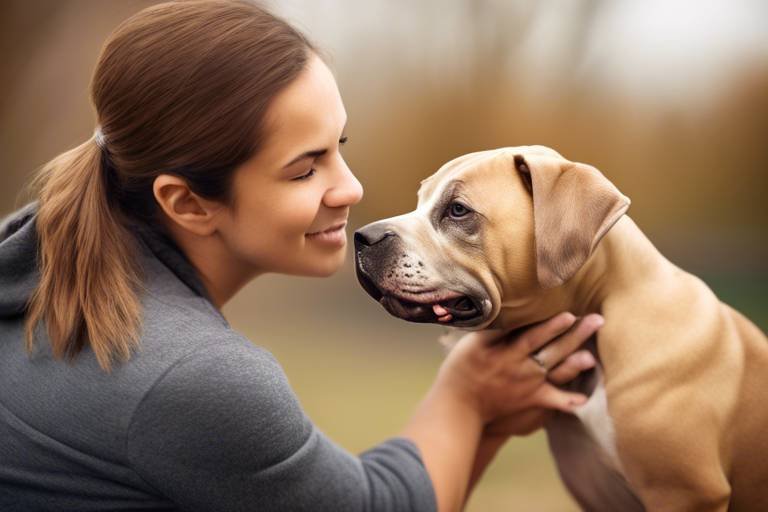Understanding the Temperament of Pekingese Dogs
The Pekingese breed is not just a dog; they are a bundle of personality wrapped in a fluffy coat. Known for their regal demeanor and charming quirks, these little lions of the dog world hold a special place in the hearts of many. Their temperament is a fascinating blend of affection, independence, and a touch of stubbornness. If you're considering bringing a Pekingese into your life, or if you're already a proud owner, understanding their temperament is key to nurturing a happy relationship.
First off, let’s talk about their history. Did you know that Pekingese dogs were once the beloved companions of Chinese royalty? This royal background contributes to their proud and confident nature. They carry themselves with an air of dignity, often acting as if they own the place. This can sometimes come off as aloofness; however, beneath that regal exterior lies a heart full of love for their family.
One of the most endearing traits of Pekingese is their affectionate disposition. They may be independent, but they form strong bonds with their owners. You might find your Pekingese following you around the house, seeking your attention or curling up next to you on the couch. This affectionate nature is their way of showing love, and it’s one of the reasons they make such wonderful companions. Imagine coming home after a long day and being greeted by your fluffy friend, tail wagging and eyes sparkling with joy—it's truly a heartwarming experience.
However, their independent streak can sometimes lead to a stubborn attitude. Pekingese can be quite set in their ways, making training a bit of a challenge. They might not always listen to commands, especially if they feel like doing their own thing. But don’t let that discourage you! With the right approach, patience, and a sprinkle of creativity, you can guide your Pekingese to be a well-behaved member of the family.
Socialization plays a crucial role in shaping a Pekingese's temperament. Early exposure to various environments, people, and pets helps them develop into well-rounded dogs. Without proper socialization, they may become overly cautious or defensive, which can lead to behavioral issues. So, it’s important to introduce them to new experiences regularly, allowing them to learn and adapt in a safe and loving manner.
When it comes to playfulness, Pekingese have a delightful side that can surprise you. While their energy levels are moderate, they enjoy playful interactions. Think of them as little bursts of joy, ready to engage in a game of tug-of-war or chase a toy across the living room. Just remember to be mindful of their physical limitations, as their short legs can tire quickly. A few short play sessions throughout the day can keep them happy and healthy.
In summary, understanding the temperament of Pekingese dogs requires a mix of appreciation for their history, recognition of their unique personality traits, and a commitment to proper training and socialization. These dogs are not just pets; they are family members with distinct needs and quirks. By embracing their affectionate nature and independent spirit, you can build a strong bond that lasts a lifetime.
- Are Pekingese good with children?
Pekingese can be good with children, but their temperament may vary. Early socialization is key to ensuring they are comfortable around kids. - How much exercise do Pekingese need?
Pekingese have moderate energy levels and require short walks and play sessions to stay healthy. - Are Pekingese prone to health issues?
Yes, they can be prone to certain health problems, including respiratory issues due to their brachycephalic nature. Regular veterinary check-ups are essential. - Can Pekingese be left alone for long periods?
While they can tolerate some alone time, Pekingese thrive on companionship and may become anxious if left alone for too long.

History of the Pekingese
The Pekingese breed boasts a fascinating history that is deeply intertwined with Chinese royalty. Originating in China over a thousand years ago, these small yet regal dogs were cherished companions to emperors and their families. In fact, the Pekingese was so highly regarded that they were often referred to as "Lion Dogs," a nod to their fierce loyalty and majestic appearance. It is believed that they were bred from the crossing of small, toy breeds and the larger Tibetan Mastiffs, resulting in their unique stature and personality traits.
During the Tang Dynasty (618-907 AD), Pekingese dogs were often seen in the imperial courts, where they were pampered and treated like royalty. This royal treatment shaped their temperament, making them exceptionally independent and confident. The breed's status continued to flourish through the ages, particularly during the Qing Dynasty, when they were often depicted in art and literature, symbolizing wealth and nobility.
However, the Pekingese faced a dramatic turn of fate during the Second Opium War in the mid-19th century. As British troops invaded the Summer Palace in Beijing, they discovered these precious dogs and decided to bring them back to England as trophies. The breed quickly gained popularity in the West, where they were embraced by the upper class and eventually made their way into the hearts of dog lovers worldwide.
Today, the Pekingese is recognized by major kennel clubs around the globe, and their unique history contributes to their distinct personality. Their royal lineage has endowed them with a certain air of dignity and an independent spirit that can be both charming and challenging for modern dog owners. Understanding their history is essential for appreciating the Pekingese's temperament and the care they require.
In summary, the Pekingese's rich history not only highlights their royal past but also explains their unique temperament and behavior. As we continue to explore their personality traits and care needs, it's essential to remember that these dogs carry with them a legacy of loyalty, independence, and a touch of royalty that makes them truly special companions.

Personality Traits
Pekingese dogs are a delightful blend of loyalty, independence, and a touch of stubbornness. Their unique personality traits make them one of the most captivating breeds out there. Imagine having a tiny lion in your living room—yes, that's the Pekingese for you! With their regal bearing and fluffy coats, they carry themselves with an air of confidence that can be both charming and amusing.
One of the most prominent traits of a Pekingese is their unwavering loyalty to their family. Once they form a bond, they will stand by you like a shadow, always ready to offer comfort and companionship. It's as if they have an innate understanding of your emotions, responding with affection when you need it the most. This loyalty, however, comes with a twist. Pekingese can be quite territorial and protective of their loved ones, making them excellent watchdogs despite their small size. They may bark at strangers, but this is just their way of saying, "Hey, this is my turf!"
Independence is another hallmark of the Pekingese personality. They have a mind of their own and often prefer to do things at their own pace. This independent spirit can sometimes be mistaken for stubbornness. For instance, when you ask them to come, they might look at you as if to say, "Why should I?" However, this trait is part of what makes them so endearing. They are not just pets; they are little personalities with preferences and quirks that you can’t help but love.
Despite their independent streak, Pekingese are incredibly affectionate companions. They thrive on human interaction and enjoy snuggling up next to their owners. You might find them curling up in your lap, seeking warmth and connection. This affectionate nature is a significant part of their charm, and it manifests in various ways:
- Gentle nudges: They often nudge you with their noses, a subtle reminder that they are there and ready for some love.
- Playful antics: Their playful side often emerges during interactions, whether it's a game of chase or a playful tug-of-war with a toy.
- Affectionate gazes: The way they look at you with those big, soulful eyes can melt even the coldest of hearts.
However, it’s crucial to remember that their affectionate nature doesn't mean they are needy. Pekingese are quite content to spend time alone, provided they have a cozy spot to curl up in. This balance of independence and affection makes them a wonderful addition to any household.
In summary, the personality traits of Pekingese dogs make them unique and lovable companions. Their loyalty, independence, and affectionate demeanor create a rich tapestry of character that keeps their owners engaged and entertained. If you're considering bringing a Pekingese into your life, be prepared for a delightful journey filled with love, laughter, and perhaps a bit of mischief along the way!
Affectionate Companions
Pekingese dogs are often described as , and for good reason. These little furballs have a unique way of forming deep bonds with their owners that can be both rewarding and heartwarming. Imagine coming home after a long day, and there, waiting for you with their fluffy tails wagging and eyes sparkling with love, is your Pekingese. It's like having a tiny, loyal friend who is always ready to shower you with affection. Their innate ability to connect emotionally with their humans makes them not just pets, but true family members.
One of the most endearing aspects of a Pekingese's personality is their desire to be close to their humans. They thrive on companionship and will often follow you around the house, wanting to be part of whatever you’re doing. Whether you’re lounging on the couch, cooking dinner, or working from home, they’ll find a cozy spot nearby, ready to offer their love and support. It's as if they have an invisible string that ties them to you, pulling them closer whenever you’re within reach.
However, it’s important to recognize that this affectionate nature comes with its own set of needs. Pekingese dogs require a fair amount of attention and affection to feel secure and happy. They thrive on positive interactions, such as cuddling, petting, and gentle play. Here are a few ways to ensure your Pekingese feels loved:
- Daily Cuddles: Set aside time each day to cuddle with your Pekingese. This not only strengthens your bond but also helps them feel secure.
- Quality Time: Engage in activities that they enjoy, whether it’s a gentle walk or a game of tug-of-war. This interaction is crucial for their emotional well-being.
- Verbal Affection: Don't underestimate the power of your voice! Regularly speak to them in a warm, loving tone to reinforce your connection.
Despite their independent streak, Pekingese dogs are also quite loyal. They often choose a favorite person in the household and can become quite protective of them. This loyalty can manifest in various ways, from following you around to barking at strangers who come too close. While this behavior is rooted in their affectionate nature, it’s essential to manage it properly to ensure they don’t become overly possessive.
In essence, the Pekingese's affectionate temperament is a delightful blend of love, loyalty, and a touch of independence. They remind us that true companionship often comes in small packages. As you nurture this bond, you’ll find that your Pekingese not only enriches your life but also teaches you the value of unconditional love and connection.
Q: How can I tell if my Pekingese is happy?
A: A happy Pekingese will exhibit playful behavior, wag their tail, and seek your company. They may also show affection by cuddling or licking you.
Q: Do Pekingese require a lot of grooming?
A: Yes, Pekingese have a long, flowing coat that needs regular grooming to prevent matting. A weekly brush and occasional baths will keep them looking their best.
Q: Can Pekingese be left alone for long periods?
A: While Pekingese can tolerate some alone time, they thrive on companionship. Long periods of solitude can lead to separation anxiety.
Socialization Needs
Socialization is a critical aspect of raising a well-adjusted Pekingese. These charming dogs, with their regal history, often carry an air of independence that can sometimes make them a bit aloof. However, without proper socialization, this independence can lead to a range of behavioral issues. Imagine a child who never interacts with others; they might grow up feeling anxious and unsure in social situations. Similarly, a Pekingese that hasn’t been socialized may become fearful or aggressive towards strangers and other pets. Therefore, it's essential to expose your Pekingese to a variety of environments, people, and other animals from a young age.
Start socialization as early as possible, ideally during their critical developmental period, which is between 3 and 14 weeks of age. During this time, they are particularly receptive to new experiences. Take your Pekingese to different places like parks, pet stores, or even friends' homes. Allow them to meet new people and other dogs while ensuring these encounters are positive. Use treats and praise to reinforce good behavior in these situations. This way, your Pekingese will learn to associate new experiences with positive outcomes, making them more confident and well-rounded.
It’s also important to continue socialization throughout their life. Just like we need to keep our social skills sharp, Pekingese benefit from regular interactions. Consider enrolling your dog in puppy classes or obedience training where they can meet other dogs and people in a controlled environment. These classes can be a fantastic way for both you and your Pekingese to learn together, reinforcing good behavior while also providing the necessary social exposure.
Remember, socialization doesn’t just happen overnight. It requires patience and consistency. Here are some tips to help you along the way:
- Introduce your Pekingese to a variety of sounds, sights, and smells.
- Encourage positive interactions with other pets by supervising playdates.
- Reward your Pekingese for calm behavior during social encounters.
- Be mindful of their body language; if they seem overwhelmed, give them a break.
In conclusion, proper socialization is vital for a Pekingese's development and overall temperament. By providing a variety of experiences and maintaining a positive approach, you can help your Pekingese grow into a confident and well-adjusted companion. The rewards of a well-socialized Pekingese are immeasurable; they will not only be a joy to you but also a delight to everyone they meet!
Q1: When should I start socializing my Pekingese?
A1: Begin socialization as early as 3 weeks old and continue throughout their life.
Q2: How do I know if my Pekingese is well-socialized?
A2: A well-socialized Pekingese will be comfortable around new people, pets, and environments without showing signs of fear or aggression.
Q3: What if my Pekingese is fearful or aggressive?
A3: Consult a professional dog trainer or behaviorist who can help address these issues through positive reinforcement techniques.
Q4: Can I socialize my Pekingese with older dogs?
A4: Yes, but always supervise interactions and ensure the older dog is friendly and calm.
Playfulness and Energy Levels
Pekingese dogs are often seen as regal companions, but don’t let their dignified demeanor fool you; they possess a delightful playful spirit that can bring joy to any household. While they may not have the stamina of larger breeds, their energy levels are surprisingly moderate, making them suitable for various living situations, including apartments. Imagine a small lion lounging in the sun—this is the essence of a Pekingese. They enjoy their moments of activity but also appreciate their downtime.
When it comes to play, Pekingese have a few favorite activities that cater to their unique personality. They love to engage in short bursts of playtime, which can include chasing after toys, gentle tug-of-war, or simply frolicking around the living room. However, it’s essential to keep in mind their physical limitations. Due to their brachycephalic (short-nosed) structure, they can be prone to respiratory issues, making intense exercise periods unsuitable. Therefore, it's wise to keep play sessions brief but frequent.
To ensure your Pekingese stays active and entertained, consider incorporating a variety of toys that stimulate their mind and body. Here are some ideas:
- Interactive toys: Toys that dispense treats can keep your Pekingese engaged and encourage problem-solving.
- Soft plush toys: These are perfect for gentle play and can provide comfort during nap time.
- Fetch toys: Lightweight balls or soft frisbees can be great for short-distance play.
Moreover, it’s crucial to recognize that Pekingese often prefer to play with their human companions rather than on their own. They thrive on interaction and will eagerly participate in games that involve their owners. This not only satisfies their playful nature but also strengthens the bond between you and your furry friend. Just remember, a quick game of fetch or a playful tug-of-war can be more fulfilling than an hour-long solo play session.
In summary, while Pekingese dogs may not be the most energetic breed, their playful side is a significant part of their charm. By understanding their energy levels and play preferences, you can create a nurturing environment that keeps them both happy and healthy. So, are you ready to unleash the playful spirit of your Pekingese?
1. How much exercise does a Pekingese need?
Pekingese require moderate exercise, typically around 20-30 minutes of playtime each day. Short walks and interactive play sessions are ideal.
2. Can Pekingese play with larger dogs?
While Pekingese can interact with larger dogs, supervision is necessary. Their small size makes them vulnerable, so it's best to introduce them to gentle playmates.
3. What are the best toys for Pekingese?
Interactive toys, soft plush toys, and lightweight fetch toys are excellent choices for Pekingese, catering to their playful nature without overexerting them.
4. How do I know if my Pekingese is getting enough exercise?
Signs of a well-exercised Pekingese include a calm demeanor, willingness to engage in activities, and a healthy weight. If your dog seems restless or overly energetic, it may need more playtime.
Common Behavioral Traits
Pekingese dogs are a delightful mix of charm and challenge, showcasing a variety of behavioral traits that can both amuse and perplex their owners. One of the most notable traits is their stubbornness. This independent streak can sometimes make them seem aloof or disinterested, but don’t let that fool you! Beneath that regal exterior lies a loyal companion who thrives on affection and attention from their family. Their stubborn nature often means they will do things on their own terms, which can be a source of frustration during training sessions.
Another common behavior is their protectiveness. Pekingese are known to be quite vigilant and may take on the role of a little watchdog. They are often suspicious of strangers and can be vocal when they feel their territory is threatened. This behavior, while endearing, requires careful management, especially when introducing them to new people or pets. It's important to socialize them early to help them distinguish between friend and foe.
Despite their small size, Pekingese have a big personality. They tend to be quite playful and enjoy engaging with their owners through games and interactive play. However, their energy levels are moderate, so it's essential to balance playtime with rest. They may not be the most energetic breed, but they certainly know how to have fun when the mood strikes. You might find them enjoying a good game of tug-of-war or chasing after a toy, but be mindful of their physical limitations due to their brachycephalic (short-nosed) structure.
Moreover, Pekingese can exhibit some quirky behaviors that add to their charm. For instance, they often enjoy lounging in sunny spots, soaking up warmth like little royalty. Their tendency to seek out comfortable resting places can sometimes lead them to claim your favorite chair or spot on the couch as their own! This behavior is a reflection of their affectionate nature, as they love to be close to their human companions.
In summary, while Pekingese dogs have their unique set of behavioral traits, understanding these characteristics can lead to a more harmonious relationship. Their stubbornness, protectiveness, playfulness, and quirky habits contribute to their endearing personality. With patience and love, owners can navigate these traits effectively, ensuring that their Pekingese feels secure and cherished in their home.
- Are Pekingese good with children? Yes, Pekingese can be good with children, but early socialization is essential to ensure they are comfortable and patient with younger family members.
- Do Pekingese require a lot of exercise? No, Pekingese have moderate energy levels and do not require excessive exercise. Short walks and playtime are usually sufficient.
- How can I manage my Pekingese's stubbornness during training? Using positive reinforcement techniques, such as treats and praise, can help motivate them and make training more effective.
- What are common health issues in Pekingese? Pekingese are prone to certain health issues, including respiratory problems due to their short noses, eye conditions, and joint issues.

Training and Obedience
Training a Pekingese requires a unique blend of patience, understanding, and a sprinkle of creativity. These charming little dogs come with an independent streak that can sometimes resemble the personality of a stubborn toddler. But don’t let that deter you! With the right approach, you can foster a positive and rewarding training experience that strengthens the bond between you and your furry friend. Think of training as a dance; it requires rhythm, timing, and a lot of practice.
One of the most effective methods for training a Pekingese is through positive reinforcement. This approach involves rewarding your dog for good behavior rather than punishing them for bad behavior. Imagine how much more motivated you would be to complete a task if you knew there was a treat waiting for you at the end! For Pekingese, this could mean treats, praise, or even a favorite toy. The key is to be consistent and timely with your rewards, so they make the connection between the action and the outcome.
However, training a Pekingese isn’t without its challenges. Their independent nature can lead to moments where they might seem disinterested or distracted. It’s crucial to keep training sessions short and engaging. Aim for about 5 to 10 minutes of focused training, followed by a fun play session. This not only helps keep their attention but also makes training feel less like a chore and more like an enjoyable activity.
Here are a few tips to overcome common challenges in training:
- Be patient: Remember, every dog learns at their own pace. Celebrate small victories and don’t get discouraged by setbacks.
- Establish a routine: Dogs thrive on consistency. Try to train at the same time each day to help your Pekingese understand when it's time to learn.
- Use engaging methods: Incorporate games and fun activities into training. Pekingese love to play, so using their favorite toys can make a big difference.
It’s also worth noting that socialization plays a vital role in training. Exposing your Pekingese to various environments, people, and other pets can help them develop into well-rounded dogs. Socialization is like a buffet of experiences; the more they try, the more they learn about the world around them. However, this should be done gradually and positively to avoid overwhelming them.
In summary, training and obedience for Pekingese dogs can be a delightful journey filled with challenges and triumphs. With patience, positive reinforcement, and a commitment to socialization, you can cultivate a well-behaved and happy companion. Remember, the goal is not just to teach commands but to build a trusting relationship with your Pekingese, which will make all the difference in their behavior and temperament.
Here are some common questions that new Pekingese owners often have regarding training and obedience:
- How long does it take to train a Pekingese?
Training duration varies by dog, but with consistent practice, you can see progress in a few weeks. - Can Pekingese be trained to do tricks?
Absolutely! Pekingese are intelligent and can learn a variety of tricks, especially with positive reinforcement. - What are some common behavioral issues in Pekingese?
Some common issues include stubbornness, barking, and separation anxiety, but these can often be managed with proper training.
Positive Reinforcement Techniques
When it comes to training your Pekingese, positive reinforcement is not just a technique; it's a philosophy that can transform your relationship with your furry friend. Imagine trying to teach a child to ride a bike by only pointing out their mistakes. It wouldn't be very effective, right? Similarly, Pekingese dogs respond much better to encouragement and rewards rather than punishment. This approach not only fosters a sense of trust but also makes learning fun for both you and your pup.
One of the most effective ways to implement positive reinforcement is through treats. These can be small, tasty morsels that your Pekingese loves. When they successfully perform a command or behave well, reward them immediately. This creates a clear connection between their action and the reward, making it more likely they’ll repeat the behavior in the future. However, moderation is key; too many treats can lead to unwanted weight gain, especially in a breed that is prone to obesity.
In addition to treats, verbal praise is a powerful tool. Dogs, including Pekingese, are highly attuned to their owner's voice. A cheerful and encouraging tone can make your pup feel like a superstar! Pairing your verbal praise with a treat can reinforce the behavior even more. For instance, when your Pekingese sits on command, say something like, “Good boy!” or “What a great sit!” while giving them a treat. This dual reinforcement helps solidify the command in their mind.
Another effective method is to use playtime as a reward. Pekingese are playful and enjoy engaging with their owners. If your dog successfully follows a command, consider rewarding them with a few minutes of their favorite game or a fun toy. This not only reinforces the behavior but also strengthens your bond through shared joy.
Consistency is also crucial in positive reinforcement. Set clear rules and stick to them. If you sometimes reward a behavior and other times you don’t, it can confuse your Pekingese. For example, if you want them to stop barking at the mailman, make sure to reward them for being quiet every time the mailman arrives. Over time, they’ll learn that silence brings rewards, while barking does not.
Lastly, patience is your best friend when it comes to training. Pekingese can be a bit stubborn, so don’t get discouraged if they don’t catch on right away. Celebrate small victories and keep your training sessions short and fun. A 5-10 minute session is often enough to keep their attention without overwhelming them. Remember, the goal is to create a positive and enjoyable learning experience for both of you!
- How long does it take to train a Pekingese? Training can vary from dog to dog, but with consistent positive reinforcement, you can expect to see progress within a few weeks.
- Can I use toys as a reward? Absolutely! Many Pekingese respond well to toys, especially if they have a favorite one.
- What if my Pekingese is stubborn? Stubbornness is common in the breed. Keep your training sessions fun and engaging, and don’t hesitate to take breaks if your pup seems frustrated.
Challenges in Training
Training a Pekingese can often feel like trying to teach a cat to fetch—both amusing and frustrating! These dogs have a strong independent streak that can make them appear aloof or stubborn when it comes to following commands. You might find yourself wondering why your Pekingese seems to be giving you the silent treatment when you ask them to sit or stay. This behavior is not a reflection of their intelligence; rather, it stems from their regal heritage and a natural inclination to do things on their own terms.
One of the major challenges in training Pekingese is their tendency to become easily distracted. With their curious nature and love for exploring, a simple training session can quickly turn into a game of chase as they dart off to investigate a rustling leaf or a passing butterfly. This can be particularly challenging in environments that are rich in stimuli. To combat this, it's essential to create a focused training atmosphere, free from distractions, especially during the early stages of training.
Another hurdle is their unique temperament, which can vary widely from one Pekingese to another. Some may be more eager to please, while others might exhibit a more stubborn attitude. This variability means that what works for one dog may not work for another. Therefore, it’s crucial to be patient and adaptable in your training approach. Consider using a variety of techniques and observe which methods resonate best with your furry friend.
Moreover, Pekingese dogs can be quite sensitive to harsh training methods. They thrive on positive reinforcement, so using treats, praise, and affection is key. However, this doesn’t mean that training should be all fun and games. Setting clear boundaries and expectations is equally important. If you’re too lenient, your Pekingese may take liberties, thinking they can rule the roost. Striking a balance between fun and discipline is essential for effective training.
Lastly, consistency is paramount in training a Pekingese. These dogs respond best to regular routines and clear commands. If you find yourself wavering in your training methods or commands, your Pekingese will likely become confused. Establishing a consistent training schedule not only helps reinforce good behavior but also strengthens the bond between you and your dog.
In summary, while training a Pekingese may come with its set of challenges, understanding their unique temperament can lead to a rewarding experience. With patience, consistency, and a sprinkle of creativity, you can turn your Pekingese into a well-behaved companion who knows when to strut their stuff and when to follow your lead.
- How long does it take to train a Pekingese? Training duration varies based on the individual dog's personality and consistency of training. Generally, expect several weeks to several months for basic commands.
- Are Pekingese easy to house train? House training can be challenging due to their independent nature. Consistent routines and positive reinforcement can help.
- What are some effective training methods for Pekingese? Positive reinforcement, clicker training, and short, engaging sessions are highly effective for Pekingese.
- Can Pekingese learn tricks? Yes! Pekingese are intelligent and can learn a variety of tricks, especially when motivated by treats and praise.
- How do I handle stubborn behavior in Pekingese? Patience is key. Use positive reinforcement, be consistent, and try to keep training sessions short and fun.

Health Considerations
When it comes to the health of your Pekingese, understanding the unique considerations specific to this breed is crucial. Pekingese dogs are known for their charming personalities, but they are also predisposed to certain health issues that can impact their overall quality of life. As a responsible owner, it's essential to be aware of these conditions and how they can affect your furry friend's temperament and behavior.
One of the most common health concerns for Pekingese is brachycephalic airway syndrome. This condition arises from their short snouts, which can lead to breathing difficulties. It’s not uncommon for Pekingese to snore or have trouble breathing, especially during exercise or in hot weather. To ensure your Pekingese remains comfortable, it's important to monitor their breathing and avoid strenuous activities during extreme temperatures.
Another significant health issue to consider is eye problems. Pekingese are prone to various eye conditions, including dry eye and prolapsed nictitating membrane (also known as cherry eye). Regular veterinary check-ups can help catch these issues early, allowing for timely treatment that can prevent more severe complications down the line.
Additionally, Pekingese may face joint problems, particularly patellar luxation, where the kneecap dislocates. This condition can lead to pain and mobility issues, making it essential to maintain a healthy weight and provide gentle exercise. A balanced diet and regular veterinary visits are key components in managing these health risks.
To give you a more comprehensive view of the health considerations for Pekingese, here’s a table outlining some common health issues, their symptoms, and preventive measures:
| Health Issue | Symptoms | Preventive Measures |
|---|---|---|
| Brachycephalic Airway Syndrome | Snoring, labored breathing, intolerance to heat | Avoid strenuous exercise and monitor breathing |
| Eye Problems | Excessive tearing, squinting, redness | Regular vet check-ups and eye drops if necessary |
| Patellar Luxation | Limping, difficulty walking, pain | Maintain healthy weight and provide low-impact exercise |
Regular veterinary care is vital for the well-being of your Pekingese. Routine check-ups can identify potential health issues before they become serious problems. It's also essential to keep up with vaccinations and preventive care, including dental cleanings, which can significantly impact their overall health and temperament.
In summary, while Pekingese dogs are undoubtedly affectionate and charming companions, their unique health considerations require a proactive approach. By staying informed and committed to their health care, you can ensure that your Pekingese thrives and continues to bring joy to your life.
- What are the most common health issues in Pekingese? The most common issues include brachycephalic airway syndrome, eye problems, and patellar luxation.
- How often should I take my Pekingese to the vet? Regular check-ups are recommended at least once a year, but more frequent visits may be necessary for older dogs or those with existing health conditions.
- Can Pekingese exercise safely? Yes, but it’s important to keep exercise moderate and avoid hot weather to prevent breathing difficulties.
Breeding and Genetic Factors
The temperament of Pekingese dogs is deeply influenced by their . These adorable little furballs, with their regal history, have been selectively bred over centuries to achieve their unique physical and behavioral traits. Understanding how these factors play into their temperament can help owners provide better care and training for their beloved pets.
For starters, the Pekingese breed has a lineage that traces back to the imperial courts of China, where they were cherished companions of royalty. This selective breeding aimed to enhance specific traits, such as their independence, loyalty, and distinctive appearance. However, this focus on certain characteristics can also lead to a predisposition to various health issues, which in turn can affect their behavior and temperament.
Genetics can play a significant role in determining how a Pekingese behaves. For instance, certain hereditary traits can make them more prone to stubbornness or anxiety. It’s important for potential owners to be aware of these traits, as they can influence how the dog interacts with family members and other pets. The following table outlines some common genetic factors that can impact a Pekingese's temperament:
| Genetic Factor | Potential Impact on Temperament |
|---|---|
| Stubbornness | May lead to challenges in training and obedience. |
| Separation Anxiety | Can result in destructive behaviors when left alone. |
| Socialization Needs | May require more effort to ensure they are comfortable around other pets and people. |
| Health Issues | Conditions like brachycephalic airway syndrome can affect their overall temperament. |
Alongside genetics, the breeding practices employed by breeders also greatly influence the temperament of Pekingese dogs. Responsible breeders prioritize health and temperament, aiming to produce puppies that not only look good but also possess a stable and friendly demeanor. Conversely, less scrupulous breeding practices may result in puppies that have behavioral issues or health problems. Therefore, when choosing a Pekingese, it’s crucial to select a reputable breeder who conducts health screenings and prioritizes the well-being of their dogs.
In conclusion, understanding the breeding and genetic factors that contribute to the temperament of Pekingese dogs is essential for any current or prospective owner. By being informed about these influences, owners can better manage their dog's behavior, provide appropriate training, and ensure a happy, healthy life for their furry companions.
- What are the common health issues in Pekingese dogs? Pekingese are prone to issues such as brachycephalic airway syndrome, eye problems, and joint disorders.
- How can I train my Pekingese effectively? Use positive reinforcement techniques, be patient, and keep training sessions short and fun.
- Do Pekingese get along with other pets? With proper socialization, Pekingese can get along well with other pets, but early exposure is key.
- How much exercise do Pekingese need? Pekingese require moderate exercise; short walks and playtime are usually sufficient.
Regular Veterinary Care
When it comes to the well-being of your Pekingese, is not just a good idea—it's essential. These little furballs may look cute and cuddly, but they come with their own set of health quirks that require attention. Imagine your Pekingese as a delicate piece of art: without the right care, it can become damaged over time. Regular check-ups can help catch potential issues before they become serious problems, ensuring your pup remains healthy and happy.
Routine veterinary visits typically include a few key components:
- Wellness Exams: Regular wellness exams help monitor your dog’s overall health. Your vet will check their weight, heart rate, and general condition to ensure everything is functioning as it should.
- Vaccinations: Keeping your Pekingese up to date on vaccinations protects them from various diseases. Your vet will recommend a vaccination schedule tailored to your dog’s needs.
- Dental Care: Dental health is often overlooked but is crucial for Pekingese. Regular dental check-ups can prevent periodontal disease and other health issues.
Additionally, the Pekingese breed is prone to certain health conditions, such as:
| Health Issue | Description |
|---|---|
| Brachycephalic Airway Syndrome | Due to their short snouts, Pekingese can have breathing difficulties, especially in hot weather. |
| Eye Problems | They are prone to eye conditions like cataracts and dry eye, which can affect their vision. |
| Obesity | Pekingese love their treats, but being overweight can lead to serious health issues. |
By maintaining a consistent schedule with your veterinarian, you can catch these issues early. Think of it like a car tune-up: regular maintenance can prevent bigger problems down the road. And let’s face it, nobody wants to see their furry friend suffer. So, make that appointment and keep your Pekingese in tip-top shape!
In conclusion, regular veterinary care is a cornerstone of responsible pet ownership. It not only enhances your Pekingese's quality of life but also strengthens the bond you share. After all, a healthy dog is a happy dog, and nothing beats the joy of seeing your Pekingese thrive!
- How often should I take my Pekingese to the vet? It's generally recommended to visit the vet at least once a year for a wellness check-up, but older dogs may need more frequent visits.
- What vaccinations does my Pekingese need? Your vet will provide a vaccination schedule that typically includes rabies, distemper, and parvovirus vaccines.
- Are there specific health issues I should watch for in Pekingese? Yes, be alert for breathing difficulties, eye problems, and signs of obesity.
Frequently Asked Questions
- What is the temperament of Pekingese dogs?
Pekingese dogs are known for their unique temperament, which includes a blend of loyalty, independence, and affection. They can be quite stubborn at times, but their loving nature makes them incredibly endearing companions.
- How can I socialize my Pekingese effectively?
Socializing a Pekingese is crucial for developing a well-rounded personality. Start early by exposing them to different environments, people, and other pets. Positive experiences will help them build confidence and reduce any potential behavioral issues.
- Are Pekingese good family pets?
Yes! Pekingese can be excellent family pets. They are affectionate and form strong bonds with their family members. However, it's essential to supervise interactions with young children to ensure a harmonious relationship.
- What are some common behavioral traits of Pekingese?
Pekingese exhibit a variety of charming behaviors, such as their playful antics and affectionate nature. However, they can also be territorial and may display stubbornness. Understanding these traits can help you manage their behavior effectively.
- How should I train my Pekingese?
Training a Pekingese requires patience and consistency. Use positive reinforcement techniques, such as treats and praise, to encourage good behavior. Keep training sessions short and fun to maintain their interest and enthusiasm.
- What health issues should I be aware of with Pekingese?
Pekingese are prone to certain health issues, including respiratory problems due to their brachycephalic (flat-faced) structure. Regular veterinary check-ups and preventive care are vital to ensuring their overall health and well-being.
- How much exercise do Pekingese need?
Pekingese have moderate energy levels and enjoy short walks and playtime. However, they should not be over-exercised due to their physical limitations. Aim for a balanced routine that includes both mental and physical stimulation.
- Can Pekingese get along with other pets?
With proper socialization, Pekingese can get along well with other pets. Early exposure to different animals and positive interactions will help them develop good relationships with their furry companions.



















